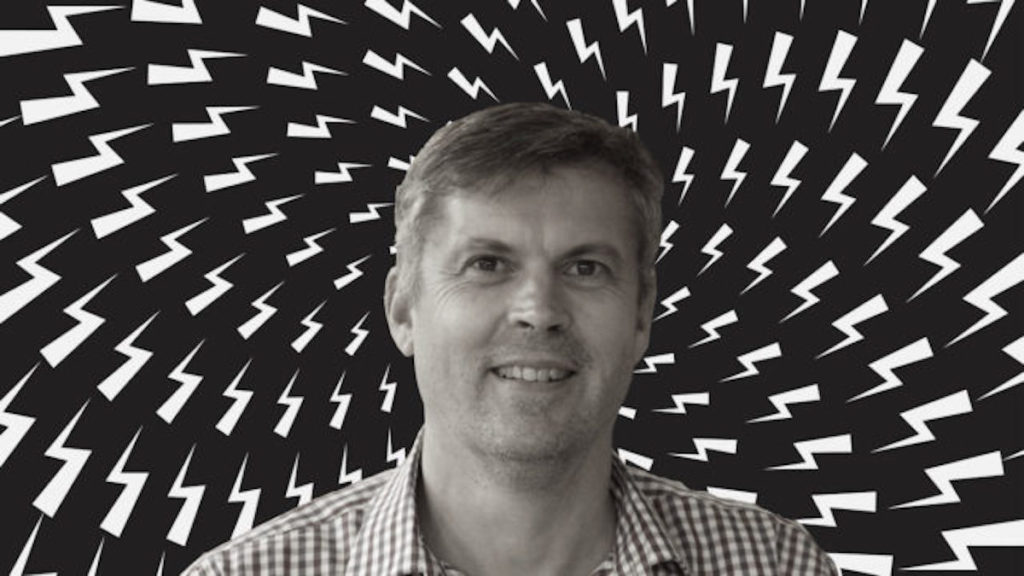Dr Boreham’s Crucible: ResMed holders breathe easy – those fat-busting needles have only hurt a little bit

Tim Boreham is one of Australia's best-known small-cap share analysts and business journalists.
Okay, let’s address the snoring elephant in the room right away: will GLP-1 drugs such as Ozempic (semaglutide) fundamentally harm ResMed’s business?
Short for glucagon-like peptide 1, GLP-1 agonists were developed to control type 2 diabetes by better regulating blood sugar. But the smarties soon found out that the drug also helped to control weight.
With ResMed shares softening over the last 12 months, investors are betting the drugs will result in a damaging epidemic of non-obesity (damaging to the company’s bottom line, that is).
The thesis goes that fewer obese patients will mean less demand for ResMed’s pumps, masks and associated paraphernalia to diagnose and treat obstructive sleep apnoea (OSA, or snoring).
There’s certainly a link between snoring and being overweight, but ResMed chief Mick Farrell is adamant that the fat-busting wonder drugs pose no harm to the business.
In fact, ResMed’s ‘real world’ data from 529,000 patients suggests GLP-1 users are more likely to seek OSA treatment (see below).
Meanwhile, ResMed last week issued second quarter (and half year) results that exceeded the market’s (subdued) expectations on revenue, earnings and market share trends.
About ResMed
ResMed is a leader in obstructive sleep apnoea (snoring) and other sleep-related respiratory disorders.
Its core product remains the continuous positive air pressure (CPAP) machine, a portable pump that delivers a steady flow of air to the user via a tightly-fitted mask.
The CPAP devices are the hardware, while the masks and tubes comprise the disposable components.
In recent years, ResMed has expanded into products that diagnose sleep apnoea, both in the clinic and at home. These include internet-connected devices for remote monitoring.
CPAP treatment had its roots in the 1980s, when Sydney sleep expert Dr Colin Sullivan converted a vacuum cleaner to deal with the deafening snores emitted by dogs with pushed-in faces.
This pug-nacious effort saw the tech commercialised in the US by the Baxter Centre for Medical Research – and others – before ResMed acquired the rights.
Founded by Dr Peter Farrell in 1989, ResMed listed on the Nasdaq in 1995 and the ASX in late 1999.
Michael Farrell took over from his father Peter as CEO in 2013, with Farrell senior assuming the chair. In a “streamlining” measure unveiled in January 2023 Farrell junior took over both roles, with his old man remaining “emeritus chair”.
(Evidently inspired by ResMed’s nomenclature, News Corp patriarch Rupert Murdoch last year became emeritus chair when he ceded his day job to son Lachlan.)
Via acquisitions over the last six years, ResMed has expanded aggressively into “connected care” – out-of-hospital software that enables the patient to use the devices at home, with data streamed to the clinician.
The chunkiest purchase was the debt-funded, October 2022 purchase of German software-as-a-service company Medifox Dan.
ResMed now claims to have 17 billion nights of anonymised patient sleep data stored in the internet cloud.
In the meantime, ResMed issues a stream of improved products, notably masks which are more comfortable to use.
The “latest and greatest” is Airsense 11, which has a touch screen and other digital enhancements.
Readers also should not be surprised that ResMed is embracing “artificial intelligence” for functions such as gauging which customers are most likely to comply with treatment.
Where’s the evidence (1)?
ResMed’s real world evidence consisted of tracking the behaviour of 529,000 patients diagnosed with sleep apnoea and also on a GLP-1 drug.
The upshot was that the GLP-1 users were 10 percentage points more likely than non-users to seek a full-rate CPAP prescription, and after a year they were three percentage points more likely to seek resupply (that is, order replacement masks). In other words, they were more compliant.
After two years they were five percentage points more likely to do so.
Nonetheless, some ResMed watchers remain unconvinced. Broker UBS reckons the weight drugs will result in the company losing 14 per cent of its sales volumes by the 2030s.
Where’s the evidence (2)?
Called Surmount, a study carried out by Eli Lilly is assessing the effect of the GLP-1 drug tirzepatide (sold by the drug maker as Zepbound) in participants with obstructive sleep apnoea and obesity.
The key objective is to ascertain whether tirzepatide is effective for treating OSA by inducing weight loss.
The 469 patients are evenly divided into those unable or unwilling to use CPAP and those on CPAP. The cohorts are then split further into placebo and non-placebo in terms of GLP-1 administration.
A readout is expected in March.
Noting the study’s small size, Farrell says the trial is likely to hit its primary-endpoint of weight loss, but he echoes the principal investigators view that the idea of treating sleep apnoea with weight loss alone is “preposterous”.
The answer, of course, is pharmaco-therapy combined with OSA treatment.
Meanwhile, the Mayo Clinic says it’s not clear how GLP-1 results in weight loss. They may curb hunger and slow the movement of food from the stomach into the small intestine, resulting in patients feeling fuller.
Where’s the evidence (3)?
Then there’s the age-old nexus between snoring and heart disease.
In June last year, ResMed pointed to two retrospective studies showing CPAP adherence could reduce hospitalisations and operating room visits for OSA patients with systolic and diastolic heart failure.
After one year, this reduced costs by 18 per cent for patients with diastolic heart failure and 40 per cent for systolic heart failure.
The results from the two studies were presented at last year’s Sleep 2023 convention. Given the shindig was held in lively Rio de Janeiro, we’re assured it wasn’t a snooze fest.
The findings are a big deal, given three of four people with heart failure also have sleep apnoea.
The wrong sort of magnetic attraction
Last year, the US Food and Drug Administration issued a class 1 notice to ResMed, demanding the company update its instructions on its masks that contain magnetic clips.
The issue is that the magnets can interfere with the workings of implanted devices such as pacemakers.
The notice didn’t require the company to recall the masks and management is keen to avoid the ‘r’ word.
According to broker Citi, the company has sold around 20 million masks over 10 years, but as they have a useful life of six months most would have been chucked out already.
Then there’s the matter of Philips Respironics returning to the market after being forced to withdraw one million of its ventilators from the market because the sound abatement foam used produced toxic gases.
This June 2021 recall was – indeed – a recall.
The FDA was unhappy with the replacement foam, which potentially could break off and clog the airpath (rather defeating the purpose of the therapy).
In October last year, Philips described its return-to-market strategy as encouraging and has resumed selling outside of the US.
Philips has not indicated when it will return to the US market. But Citi estimates the company “eventually” will regain its original circa 20 per cent market share: half of it from ResMed.
Farrell dubs Philips as a “fair competitor” but adds: “We were taking share in 2019 and we are taking share in 2023-’24 as they come back to the market.”
He’s also unperturbed by a raft of second-tier rivals that have bobbed up to steal Philip’s abandoned market share.
COPD: the next epidemic
Even if CPAP demand does plunge because of the obesity drugs, the increasing incidence of COPD looks likely to fill the void.
COPD refers to a range of lung conditions, notable emphysema, chronic bronchitis and non-reversible asthma.
As reported in the Australian Medical Association’s Network Open journal, global COPD rates are expected to rise 23 per cent between 2020 and 2050, notably in women in low and middle-income countries.
COPD is synonymous with smoking, but is also caused by poor air quality, including indoor pollution from burning biomass for cooking.
Finances and performance
While ResMed’s reported profits were off the boil, the company’s second quarter results (to December 31, 2023) were better than expected.
ResMed reported revenue of $US1,162 million, up 12 per cent for the three months. Net income (net profit) fell seven per cent to $US208.8 million.
Of the total turnover, the company derived 53 per cent from devices (the generators) and 35 per cent from masks and related stuff (such as clips). The ‘out of hospital’/internet cloud subscription business contributed 13 per cent.
While ResMed operates in 140 countries, it is primarily a US business, with the Americas contributing 68 per cent of revenue and Europe/Asia/rest of the world 32 per cent.
ResMed’s Americas revenue grew nine per cent: seven per cent from devices and 10 per cent from masks.
Elsewhere, revenue surged 16 per cent: 19 per cent from devices and nine per cent from masks.
The company spent $US73.9 million on research and development, 6.4 per cent of net revenue.
Management notes the strong growth of the software-as-a-service business: up 24 per cent, or up 10 per cent excluding the Medifox Dan contribution.
ResMed reported cash of $US210 million and net debt of $US1016 million.
Over the last year, ResMed shares have meandered between $21.44 (September 25 last year) and $35.93 (May 1, 2023). The stock surged six per cent after last Thursday’s earnings proclamation and since then have advanced nine percent.
Dr Boreham’s diagnosis:
If Farrell is right about the fat pills being a tailwind rather than a threat, ResMed’s nine per cent share sell down after the last 12 months looks overcooked.
Add a still-winged competitor (Philips Respironics) into the mix and Resmed looks like having a dream run.
But as Covid showed, new threats can emerge out of the blue.
Having overcome the pandemic-related supply chain disruptions, chief financial officer Brett Sandercock says the Red Sea shipping disruptions have had a “definite” impact on the company, with lead times blowing out by two to three weeks.
Close to one billion citizens globally have sleep apnoea – almost half of them severely – with only 20 per cent diagnosed.
But Farrell argues the company has tapped only 10 per cent of its addressable market across all the related maladies.
“We are the clear leader in OSA in a huge and growing market with more than one billion people impacted globally.”
Still, management won’t be caught napping in its quest to remain the market leader.
Disclosure: Dr Boreham is not a qualified medical practitioner and does not hold a doctorate of any sort – even in his dreams.
This column first appeared in Biotech Daily.
The views, information, or opinions expressed in the interviews in this article are solely those of the interviewees and do not represent the views of Stockhead. Stockhead does not provide, endorse or otherwise assume responsibility for any financial product advice contained in this article.
Related Topics

UNLOCK INSIGHTS
Discover the untold stories of emerging ASX stocks.
Daily news and expert analysis, it's free to subscribe.
By proceeding, you confirm you understand that we handle personal information in accordance with our Privacy Policy.








